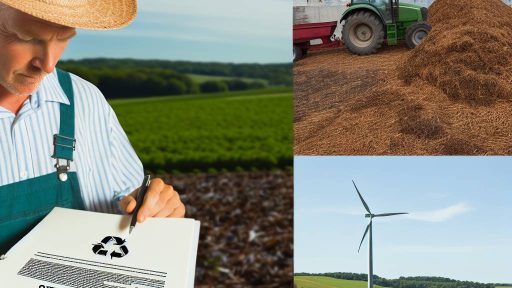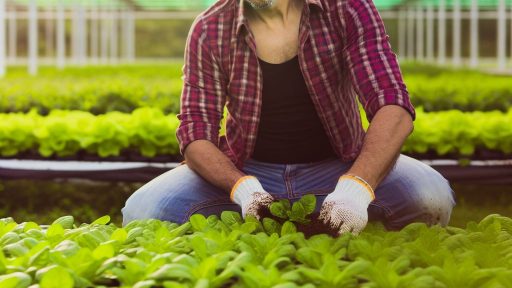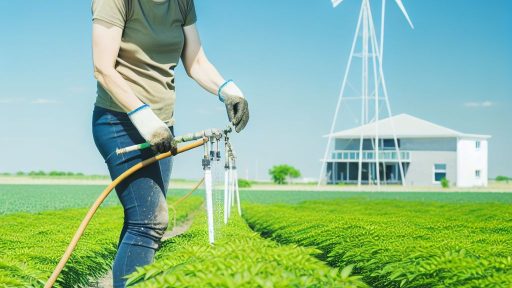Introduction to Waste-to-Energy Concepts in Agriculture
Waste-to-energy is an innovative approach gaining traction in agriculture.
This method transforms agricultural waste into usable energy.
Moreover, it addresses both energy production and waste management issues.
Understanding Agricultural Waste
Agricultural activities generate significant waste.
This includes crop residues, manure, and processing by-products.
Farmers often find it challenging to manage this waste effectively.
However, this waste can become a valuable resource.
Specifically, it can produce energy in various forms.
Methods of Energy Generation
There are several methods for converting waste to energy.
- Anaerobic digestion breaks down organic matter to produce biogas.
- Combustion directly burns waste to generate heat and power.
- Gasification converts organic materials into synthetic gas for energy production.
Each method has unique advantages and suitability based on waste types.
Benefits of Waste-to-Energy Systems
Implementing waste-to-energy systems offers multiple benefits.
- First, it reduces reliance on fossil fuels.
- Second, it decreases greenhouse gas emissions.
- Third, it enhances farm profitability by generating extra revenue.
Additionally, this approach helps farmers manage waste efficiently.
Consequently, they promote sustainability in agricultural practices.
Challenges and Considerations
Despite the benefits, challenges exist in implementing these systems.
- High initial investment costs can deter farmers.
- Technical expertise may be required for operation and maintenance.
- Regulatory hurdles can complicate the adoption of these technologies.
Farmers must evaluate these challenges against potential rewards.
Transform Your Agribusiness
Unlock your farm's potential with expert advice tailored to your needs. Get actionable steps that drive real results.
Get StartedUltimately, successful implementation can lead to significant positive impacts.
Types of Agricultural Waste Suitable for Energy Generation
Crop Residues
Farmers generate significant amounts of crop residues annually.
These residues include stalks, leaves, and husks from harvested crops.
Utilizing crop residues for energy production enhances resource efficiency.
Moreover, it reduces the need for chemical fertilizers.
Livestock Manure
Livestock manure is a valuable energy resource.
This includes waste from cattle, pigs, and poultry.
When processed correctly, manure can produce biogas.
Biogas is a renewable energy source used for heating and electricity.
Food Waste
Food waste from farms contributes to energy generation potential.
Unharvested crops and spoiled produce are significant quantities of waste.
By converting food waste into energy, farms can minimize landfill use.
This process subsequently lowers greenhouse gas emissions.
Agricultural By-Products
Agricultural by-products are another resource for clean energy generation.
Examples include sugarcane bagasse and rice husk.
These by-products can be directly converted into biofuels.
Utilizing by-products effectively broadens energy options for farmers.
Cover Crops
Cover crops contribute valuable organic matter after harvest.
Farmers can utilize these for composting and energy production.
The incorporation of cover crops enhances soil health as well.
Consequently, they play a dual role in farming sustainability.
Technologies for Converting Waste into Clean Energy
Introduction to Waste-to-Energy Technologies
Farm waste is abundant and often underutilized.
Innovative technologies now convert this waste into clean energy.
These solutions enhance sustainability and reduce pollution.
Showcase Your Farming Business
Publish your professional farming services profile on our blog for a one-time fee of $200 and reach a dedicated audience of farmers and agribusiness owners.
Publish Your ProfileAnaerobic Digestion
Anaerobic digestion transforms organic waste into biogas.
This process relies on microorganisms to decompose waste in the absence of oxygen.
As a result, farms can generate renewable energy while reducing waste volumes.
Biogas can be used for heating, electricity, or as vehicle fuel.
Additionally, the digestate produced enriches soil fertility.
Composting for Bioenergy
Composting is another method for managing organic waste.
It involves microbial processes that break down organic materials.
Though primarily aimed at improving soil health, it can also generate heat energy.
Farms can utilize compost heat for on-site heating needs.
Moreover, composting reduces landfill contributions significantly.
Gasification
Gasification converts biomass into synthetic gas at high temperatures.
This process occurs with limited oxygen, creating a gas mixture called syngas.
Farms can then use syngas for electricity or as chemical feedstock.
Furthermore, gasification minimizes waste by converting it into usable energy.
Pyrolysis
Pyrolysis is similar to gasification but occurs in the absence of oxygen.
The process produces biochar, bio-oil, and syngas from organic material.
This technology can effectively convert agricultural residues into valuable products.
Biochar enhances soil quality while also sequestering carbon.
Farmers can benefit from both energy production and improved crop yields.
Fermentation
Fermentation utilizes microorganisms to convert sugars into biofuels.
This method is particularly useful for crop residues like corn or sugarcane.
Bioethanol, derived from these processes, serves as a renewable energy source.
Additionally, fermentation can help reduce waste while generating income.
Future Innovations in Waste-to-Energy Technologies
Employing waste-to-energy technologies leads to multiple benefits.
These methods provide renewable energy while minimizing resource waste.
As technology advances, farms will continue to improve energy efficiency.
Ultimately, adopting these innovations will enhance overall sustainability in agriculture.
Find Out More: How Precision Agriculture Enhances Crop Yield and Farm Profitability
Case Studies: Successful Implementation of Waste-to-Energy on Farms
Green Acres Farm on the Edge of Sustainability
Green Acres Farm in Ohio transformed its waste management approach.
They implemented an anaerobic digestion system.
This system converts manure into biogas.
As a result, the farm generates electricity and heat.
They also use digestate as a nutrient-rich fertilizer.
This process significantly reduced their waste output.
Additionally, they decreased greenhouse gas emissions.
Sunny Meadows Dairy’s Path to Renewable Energy
Sunny Meadows Dairy in California adopted a closed-loop system.
They use agricultural waste and dairy manure for energy production.
This strategy harnesses methane for power generation.
The dairy farm supplies electricity to its operations.
They even sell excess energy back to the grid.
Showcase Your Farming Business
Publish your professional farming services profile on our blog for a one-time fee of $200 and reach a dedicated audience of farmers and agribusiness owners.
Publish Your ProfileThis innovation leads to substantial cost savings annually.
Furthermore, it showcases effective waste utilization.
River Valley Orchard’s Biogas Success
River Valley Orchard in New York focuses on fruit waste recycling.
They developed a biogas facility to utilize leftover organic materials.
The orchard processes apple cores and peels into energy.
This method powers their processing equipment effectively.
Additionally, it reduces the need for chemical fertilizers.
The orchard has seen improved soil health thanks to this initiative.
Besides, they engage the community in sustainability practices.
Prairie Wind Farm’s Collaborative Efforts
Prairie Wind Farm partnered with local farmers for energy generation.
The farmers contribute organic waste for shared biogas facilities.
This collaboration maximizes resource efficiency across farms.
They collectively reduce waste disposal costs.
Moreover, they produce renewable energy for their operations.
This community-driven initiative strengthens local ties.
It sets an example for future agricultural practices.
Gain More Insights: Water Management Strategies in Agroforestry for US Farmers
Environmental Benefits of Using Waste for Energy Production
Reduction of Landfill Waste
Utilizing agricultural waste significantly reduces landfill contributions.
This process diminishes the consumption of space in landfills.
It also leads to a decrease in methane emissions from decomposing organic matter.
Lower Greenhouse Gas Emissions
Generating energy from waste helps reduce greenhouse gas emissions.
It replaces fossil fuels, which are major sources of carbon dioxide.
Thus, this approach contributes to mitigating climate change.
Conservation of Natural Resources
Waste-to-energy systems conserve valuable natural resources.
They decrease the need for non-renewable energy sources.
Moreover, this practice enhances resource efficiency in farming.
Improvement of Soil Health
The end products of waste processing can enrich soil quality.
Organic fertilizers derived from waste promote healthier crops.
This enhances overall agricultural productivity sustainably.
Promotion of Circular Economy
Utilizing waste for energy supports a circular economy model.
It encourages recycling and reusing materials within farming practices.
Farmers can foster sustainable practices while generating energy.
Delve into the Subject: Renewable Resource Utilization for Irrigation Efficiency

Economic Analysis: Cost-effectiveness of Waste-to-Energy Systems
Overview of Waste-to-Energy Systems
Waste-to-energy systems convert agricultural waste into usable energy.
These systems can produce electricity, heat, or biofuels.
They address waste disposal challenges on farms effectively.
Moreover, they reduce greenhouse gas emissions significantly.
Initial Investment and Setup Costs
The initial investment for waste-to-energy systems can be substantial.
Factors influencing the cost include technology selection and scale.
For instance, anaerobic digesters generally have higher setup costs.
Showcase Your Farming Business
Publish your professional farming services profile on our blog for a one-time fee of $200 and reach a dedicated audience of farmers and agribusiness owners.
Publish Your ProfileHowever, their long-term benefits often outweigh the initial expenses.
Operational Costs and Maintenance
Operational costs vary depending on the system type and size.
Regular maintenance is essential for optimal efficiency.
Farmers must budget for ongoing operational expenses.
In contrast, well-maintained systems can yield significant energy savings.
Revenue Generation and Financial Incentives
Waste-to-energy systems can provide multiple revenue streams.
Farmers can sell excess energy back to the grid.
Additionally, they may qualify for government incentives and grants.
This financial support can enhance overall project feasibility.
Environmental Benefits and Long-term Savings
The environmental benefits add immense value to waste-to-energy systems.
Reduced dependence on fossil fuels contributes to sustainability.
Over time, farmers may experience lower energy costs.
Moreover, these systems can improve farm resilience to climate change.
Case Studies and Success Stories
Several farms have successfully implemented waste-to-energy systems.
For example, Green Acres Farm has reduced waste disposal costs significantly.
They now power their operations using energy from organic waste.
This success demonstrates the potential of sustainable farming practices.
Future Directions in Sustainable Agriculture
Investing in waste-to-energy systems proves cost-effective.
These systems create a sustainable solution for energy needs.
Ultimately, they represent a forward-thinking approach to modern agriculture.
Learn More: How Wind Turbines Can Improve Farm Energy Efficiency
Regulatory Framework and Support for Waste-to-Energy Projects
Understanding the Regulatory Landscape
Regulations govern waste-to-energy projects at various levels.
Local, state, and federal guidelines dictate compliance measures.
These rules ensure environmentally responsible operations.
Understanding these frameworks is crucial for project development.
Regulatory bodies frequently update policies to reflect advancements.
Therefore, stakeholders must stay informed about changes.
Incentives for Farmers
Governments offer various incentives to promote waste-to-energy initiatives.
Tax credits can significantly reduce project costs for farmers.
Grants are also available to help fund initial investments.
Additionally, low-interest loans support these renewable energy projects.
These financial options make transitioning to clean energy more feasible.
Permitting Process
The permitting process can be complex and time-consuming.
Farmers must prepare extensive documentation to apply successfully.
Environmental impact assessments are often required.
Collaboration with regulatory agencies simplifies this process.
Engaging with local communities can also ease public concerns.
Support from Industry Organizations
Industry organizations offer invaluable support for waste-to-energy projects.
They provide resources, training, and networking opportunities.
Organizations like the Biogas Association foster collaboration among stakeholders.
Showcase Your Farming Business
Publish your professional farming services profile on our blog for a one-time fee of $200 and reach a dedicated audience of farmers and agribusiness owners.
Publish Your ProfileThese groups advocate for policies that benefit farmers as well.
They also facilitate knowledge-sharing to enhance project efficacy.
Case Studies of Successful Projects
Examining successful projects offers valuable insights.
For example, Green Meadows Farm implemented a robust waste-to-energy system.
This partnership with local officials ensured regulatory compliance.
The project reduced waste disposal costs while generating energy.
Such case studies can serve as models for other farmers.
Future Trends
Innovations in Waste-to-Energy Technologies for Agriculture
Farmers are increasingly adopting waste-to-energy technologies.
These innovations help transform agricultural waste into renewable energy.
Moreover, they significantly reduce greenhouse gas emissions.
Technology companies are developing efficient biogas systems.
These systems utilize manure and crop residues effectively.
Additionally, anaerobic digestion is gaining traction in farms.
This process converts organic materials into biogas.
The produced biogas can power farm operations.
Also, it can supply energy to local communities.
Recent advances in gasification also show promise.
This technology converts solid biomass into synthetic gas.
Farmers can use this gas for heating or electricity production.
Furthermore, there are innovations in small-scale wind turbines.
These turbines can harness wind energy on farms efficiently.
Solar energy solutions are becoming more integrated as well.
Farmers install solar panels alongside their fields.
This combination maximizes land usage and energy production.
Emerging partnerships foster collaboration between farmers and tech companies.
These partnerships aim to optimize waste management practices.
Investing in research and development drives these innovations.
Sustainable agriculture benefits from these technological advancements.
Overall, waste-to-energy technologies transform farming practices.
They support a cleaner and more sustainable future for agriculture.
Additional Resources
Renewable energy as an alternative source for energy management …




